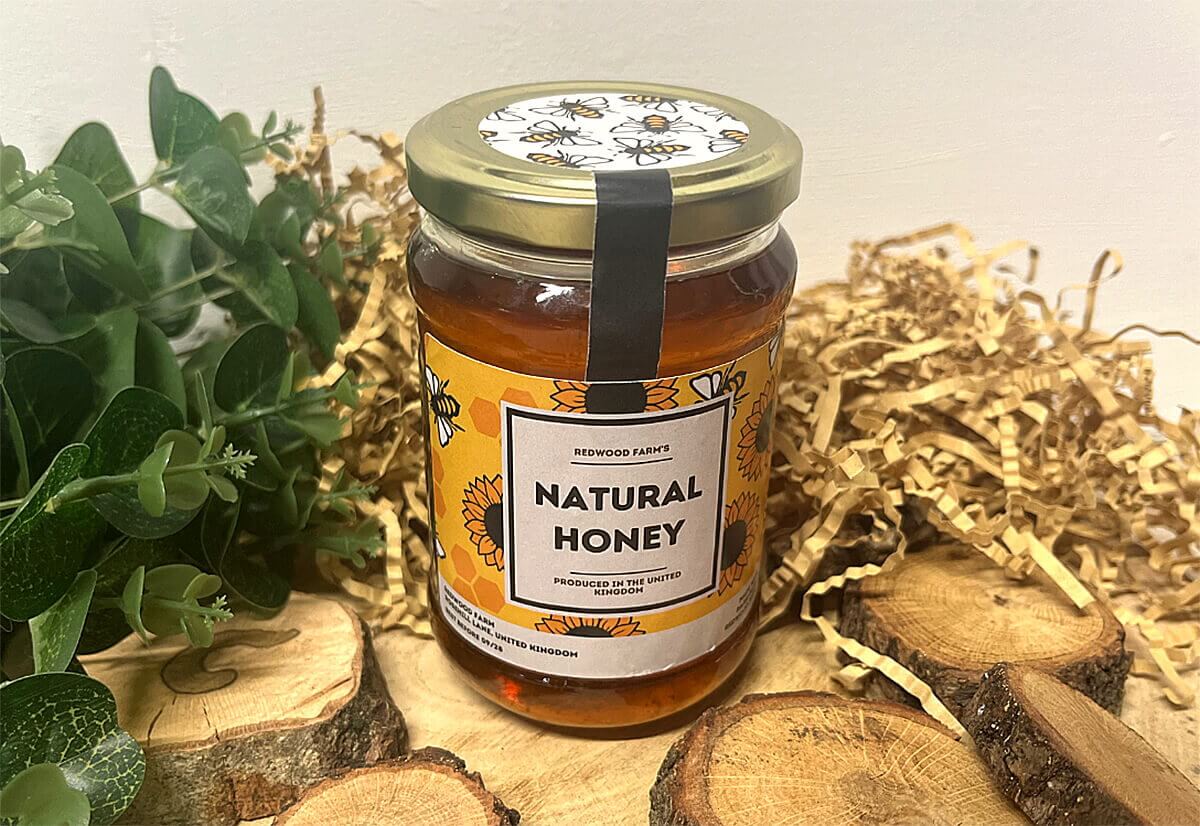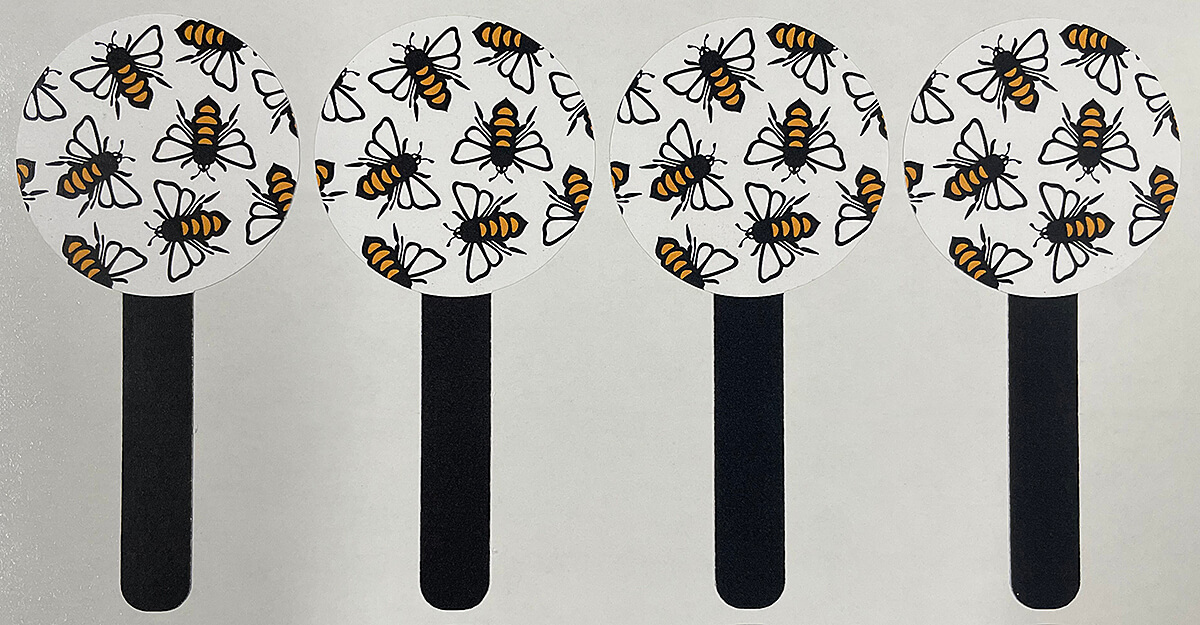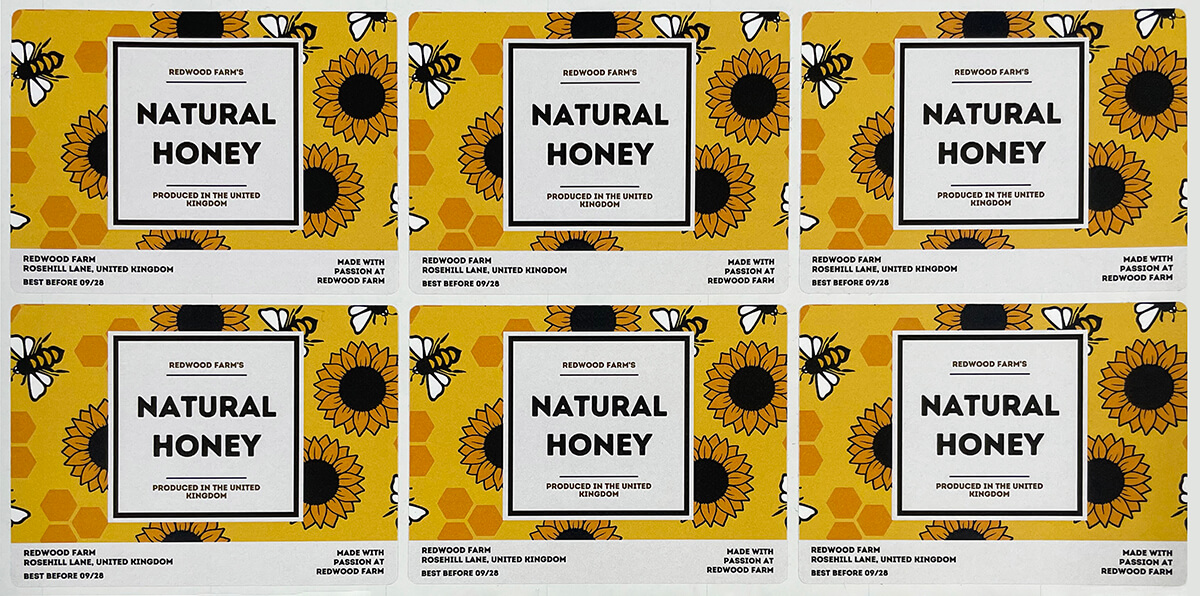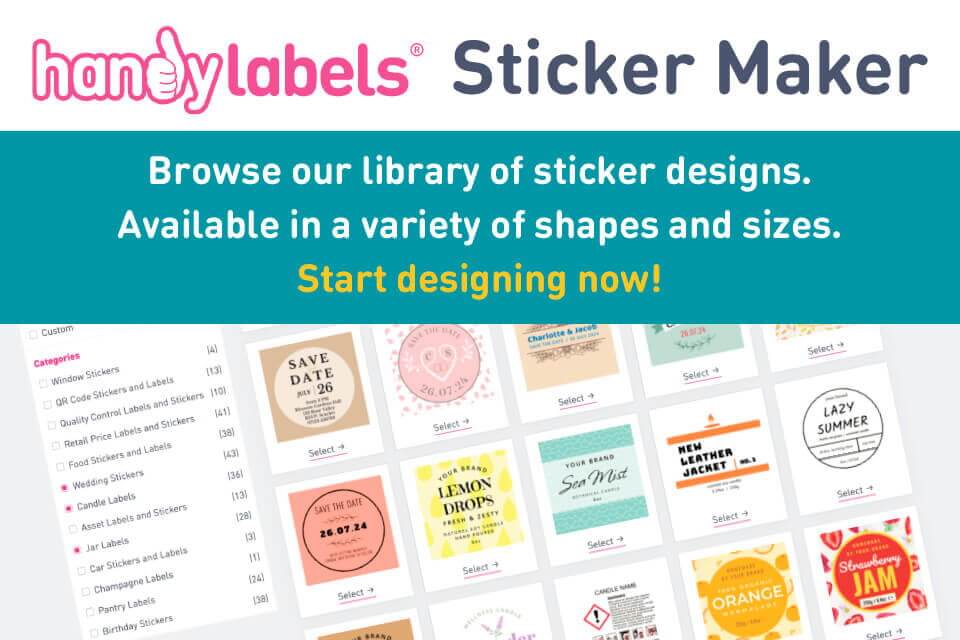Who doesn't love the sweet taste of honey? From its golden colour to its glossy texture, it's quickly securing its spot as one of Britain's favourite preserves. If you're selling it, you must consider the best way to benefit from this captivated audience. How do you do that? You make your honey jar labels irresistible to the modern consumer - make it beautiful and make it eco-friendly.
As a beekeeper or honey producer, you put in an incredible effort to protect your bees and our planet. You know how important these little creatures are to our broader ecosystem. So, your labels should reflect this.
Alongside the obvious benefits of eco-stickers, it's also important that you align them with the appropriate packaging and honey labelling regulations. This is where the content of your stickers comes in. Making them stand out on the shelves isn't the only crucial factor; they need to be informative for the customer too.
Consider using our tool to create your honey label design - focusing on an impactful style will put your product at the forefront of shoppers' minds. This is important as almost half of UK consumers in 2022 stated that branded packaging could influence their repeat purchase decisions, something you'll want to achieve. Our design application offers free premade designs and image and font libraries, along with easy-to-use text functionality, allowing you to add stunning imagery and relevant product information. Once you get started, you will be buzzing with creativity!

When looking for sustainable packaging, it's essential to consider the manufacturing process. For example, all of our labels for honey jars, including raw honey, are produced in-house in the UK, meaning we reduce fuel consumption, and we can manage waste.
We have an option to suit all budgets and demands, from small start-up beekeepers to larger corporations. With our small minimum order quantity, you're not forced into ordering more than you need, helping us reduce the waste that goes back into the environment.

Creative and Sustainable Design Ideas
Your honey label design is the first interaction customers will have with your brand. They can't taste the deliciousness of your honey, and they don't understand how much you prioritise the well-being of your bees. All they see is your honey jar on the shelf, so you must impress.
A modern approach to this would be with a minimalist design. Allow the product to do the talking. In a world of flamboyance and busyness, let your honey brand be the simplicity people crave. Try an uncoated paper with a one-colour design. Consumers can feel over-stimulated when shopping, whether through loud music playing or the abundance of options that over-promise and under-deliver. A minimalist design is the opposite of this, catching the attention of the shopper who wants something familiar and reliable.
You can also incorporate nature-inspired elements into your design through colour or imagery. For example, you could add greens and browns to your branding or use subtle foliage or insect images to mirror the ethos of your brand. With Handy Labels' Free Design Tool, you have the choice of colourful or outlined images to customise your honey label design.
To coincide with your eco-inspired designs, choosing a sticker company whose environmental policy fits your requirements is also important. With eco-friendly printing practices and finishes, we do all we can to put our planet first.

UK Honey Labelling Regulations: The Honey (England) Regulations 2015
It's essential that when you're creating your design, you refer to the relevant honey labelling regulations to ensure your products comply and that your customers are correctly informed. These regulations cover the legal standard for labelling and composition of certain foods, with the food compositional standards generally applying to foods that customers expect to be of a certain quality and/or are at risk of being substituted for lesser quality products.
If you are a producer of food, you need to make sure your marketing efforts don't confuse or mislead your customers. It's your responsibility to label your product with a name that best fits the food you sell and that honestly and accurately represents it.
Honey is one of the food products that have 'reserved descriptions', which is information you can only state if your product has a specific composition. The Honey (England) Regulations 2015 control the Honey composition and labelling in England and provide us with the reserved descriptions that must be used for certain honey products.
These include:
- the way you present your honey products
- the way in which your honey is obtained
- the source from which you acquire your honey
When adding a reserved description to your product labelling, you must ensure your honey is produced in alignment with the defined compositional criteria.
If you produce honey blends, there are some specific honey labelling requirements that need to be met. For example, when looking to add the country of origin to your labels, this will differ depending on where your honey blends originate. If it is a blend of honeys from more than one country, you can say that it is a 'blend of honeys from more than one country,' or similar as an alternative option to stating all the countries of origin.
There is a period of adjustment for honey producers. For example, if your honey was placed on the UK market before 1 January 2021, it can stay on the market stating it is a 'blend of EU honeys' 'blend of non-EU honeys' or 'blend of EU and non-EU honeys' if it was accurate wording at the time.
Starting on 1 January 2024, producers from certain areas must use 'blend of honeys from more than one country' or similar to describe their honey blends if they decide not to list each country of origin.
The period of adjustment requirements and what it entails for producers differs for those in England, Wales, Scotland and Northern Ireland, which is all explained on the .gov website.
Please remember this is an overview of the honey labelling requirements, and we advise all customers to do additional research as it's their responsibility to ensure they comply.
Statistics
Did you know in 2019, Rebecca Pow, on the UK Parliament website, stated that we had seen a recovery in UK honey production, sitting at 6,500 tonnes that year? It was also recorded that Honey bee numbers doubled over ten years, from approximately 110,000 to 220,000 in 2019. You do need to take this figure with the knowledge that the increase is partly a result of new registrations for existing beekeepers, but it's still a positive statistic.


